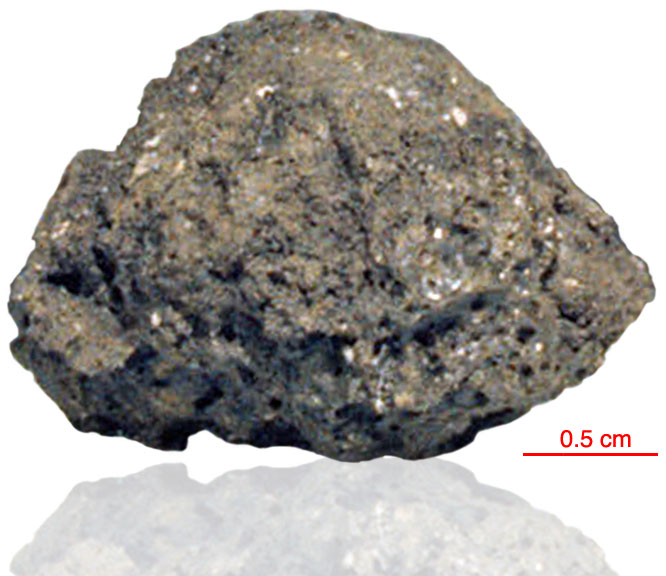
Fact sheet
15135 is a dark gray, heterogeneous agglutinate containing shocked lithic and mineral fragments. It contains about 35% vugs and vesicles up to 2mm diameter. It is tough and subangular. It was collected as part of a rake sample. consists of a vesicular dark glassy matrix containing lithic and mineral clasts. 15135 consists of 45% glass/fine matrix, 5% lithic clasts (mare), 20% mineral fragments, and 30% vesicles. The largest mineral clasts are shocked plagioclase feldspar. Rotation 1 shows a large fine-grained basaltic clast and a smaller anorthositic clast. Rotation 2 shows a suite of small mineral clasts including a partially maskelynised plagioclase clast.
The sample weighed 1.6 grams before analysis and has not been dated.
Further details of this and other Apollo samples are here: http://curator.jsc.nasa.gov/lunar/
The Apollo 15 landing site was in the Apennine Highlands, and close to Hadley Rille — a long, narrow winding valley. Approximately 76 kg of lunar material, including soil, rock, core-tube and deep-core samples, were returned to Earth.
This mission was the first flight of the Lunar Roving Vehicle which allowed the astronauts to venture further from the Lunar Module than in previous missions. During three periods of extravehicular activity, or EVA, on July 31st, and August 1st and 2nd, Scott and Irwin completed a record 18 hours, 37 minutes of exploration, travelling 17.5 miles, in the first car that humans had ever driven on the Moon.
Apollo 15 was launched on 26 July 1971.






